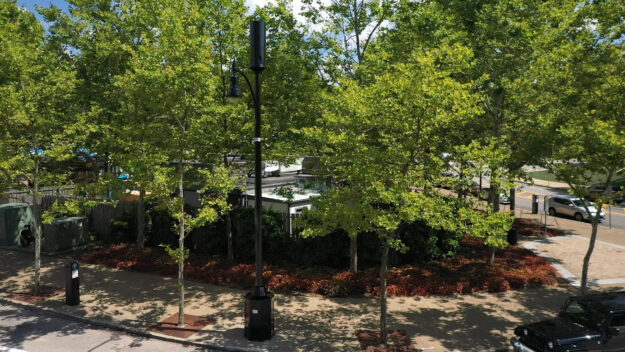Widgetized Section
Go to Admin » Appearance » Widgets » and move Gabfire Widget: Social into that MastheadOverlay zone
Pandemic push for 5G cellular: ‘How do we get and how do we get it now?’

Seven months into an ongoing global pandemic that has forced workers to telecommute, schools to go online and the health care industry to ramp up telehealth services, the push for fifth-generation (5G) broadband cellular networks has intensified.
With speeds estimated between 10 and 100 times faster than the currently predominant 4G networks, 5G will help meet the growing data demand and lead to tech innovations for businesses having to rapidly adapt to a post-pandemic world, telecommunications experts say.
The global rollout of 5G, which started in 2019, was initially slowed by the logistics of an economy shutting down due to coronavirus in early 2020, but by mid-summer, the clear need for increased connectivity and higher speeds for everything from Zoom meetings to online doctor’s appointments got the 5G ball rolling again.
Now local governments, while increasingly strapped for cash, are scrambling to figure out 5G.
“We spent a good two years doing education about the coming of 5G and about the infrastructure, and most people would tell us, ‘This is great, we’re excited, but … we’re not ready yet,’” said Mark Guillen of Crown Castle, the Houston-based company that’s the nation’s largest provider of wireless infrastructure.
“Then the pandemic hit and immediately everyone had to work from home and students had to learn remotely and businesses went online and now …. there’s no longer that effort to have to convince them about 5G,” he added. “It’s more now about, ‘How do we get it and how do we get it now? So it’s definitely been a change.”
Crown Castle massively upgraded Vail and Beaver Creek’s wireless infrastructure in 2014 to the tune of 29 small-cell towers, a macro site and a hub site on town-owned land. The company recouped the $7 million cost of the project in deals with cellular carriers AT&T and Verizon.
All the work was done in time for the 2015 World Alpine Ski Championships – a big 4G boost and public-safety upgrade for what had been fairly spotty connectivity. However, 5G is still on the horizon in the Vail Valley, even with the pressures of the pandemic.
Crown Castle has been working for the last six years in Colorado on upgrades to wireless infrastructure — building out the fiber and the network to put up small-cell towers for 5G delivery. Most of that work has been in the Denver area and along the state’s Front Range, where most of the people live. But Guillen said carriers are trying to expand into the more rural areas.
“Now that we realize that connectivity is no longer a luxury, it’s an essential necessity, we realized that there are going to be difficult economic decisions that need to be made from state to state to help make that a reality, so that even those remote areas are connected,” Guillen said.
Every city or government jurisdiction has its own regulations for deploying infrastructure on public right of ways, with different fees, processes and aesthetics, and navigating that regulatory framework can be time-consuming – with some deployments taking two to three years.
The pandemic has increased demand, but there’s also a lot of conspiratorial misinformation being spread about 5G, leading to another set of challenges for proponents of the technology.
In the end, Guillen said it will be worth the wait.
“It wasn’t until we got the capacity of a 4G network that we got things like Zoom and Uber,” Guillen said. “So 5G is going to be revolutionary because the capacity of the network is so much greater. It’s not just going to be a little faster; it’s going to be infinitely faster.
“And it’ll be interesting to see, now that we live in the pandemic world, what innovations will come about that will help solve some of those problems.”
David O. Williams
Latest posts by David O. Williams (see all)
- First ever Habitat for Humanity homes craned into Vail as ski town tries to tackle acute housing crisis - July 9, 2025
- ‘Now we have to look at that’, Colorado AG Weiser says of challenging Trump’s energy emergency - July 8, 2025
- Neguse, Bennet call for halt to BLM emergency rule aimed at increasing Utah oil-train traffic - June 23, 2025


